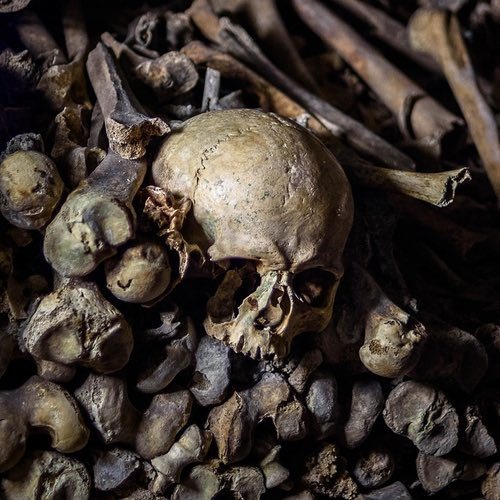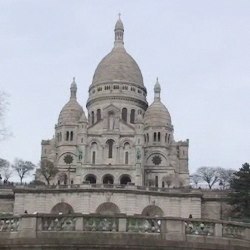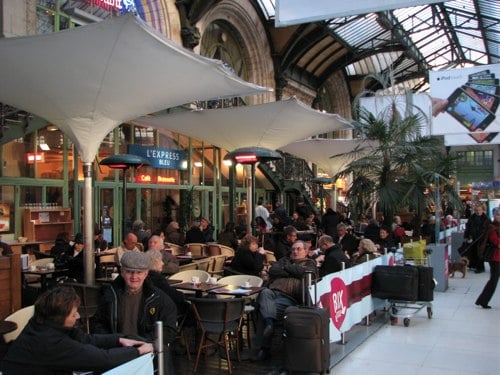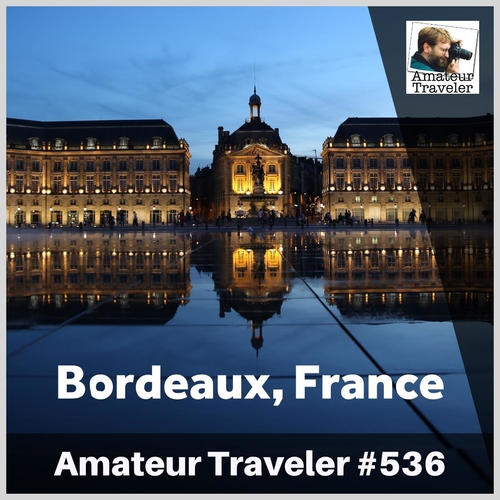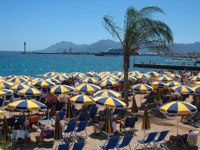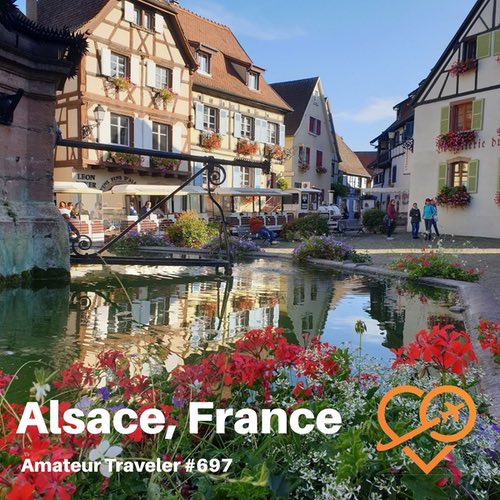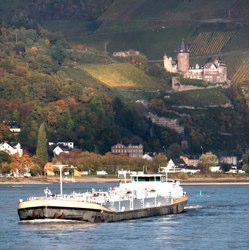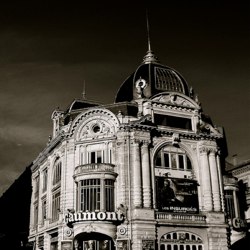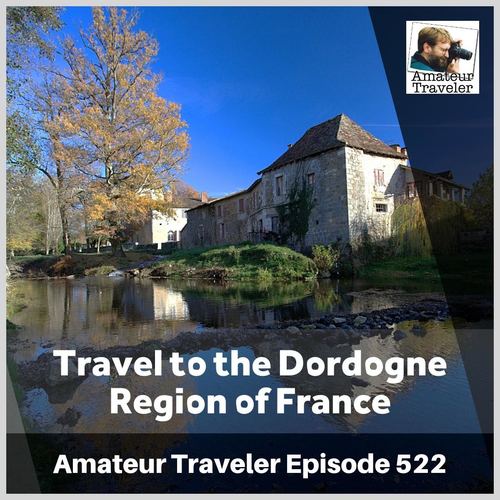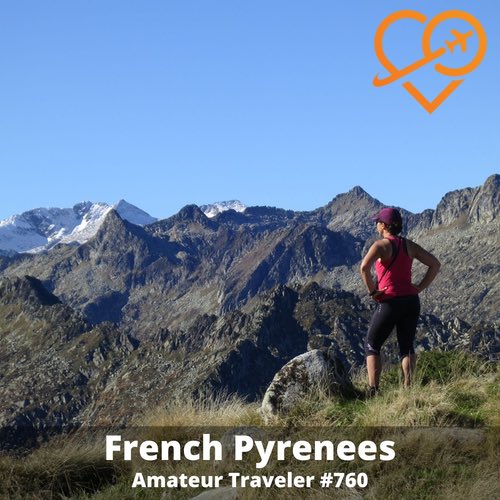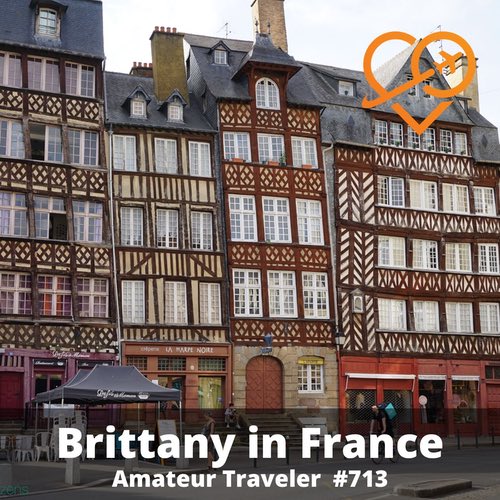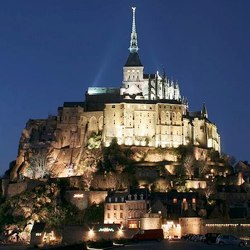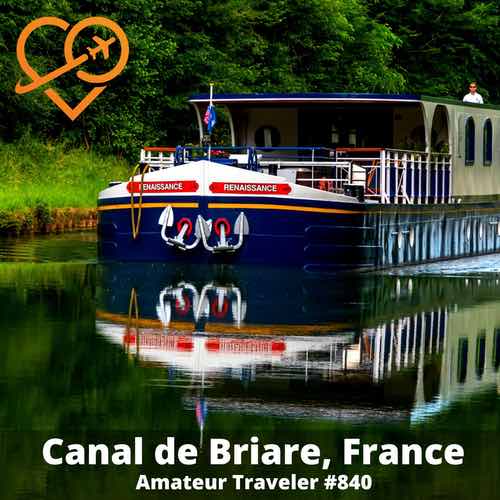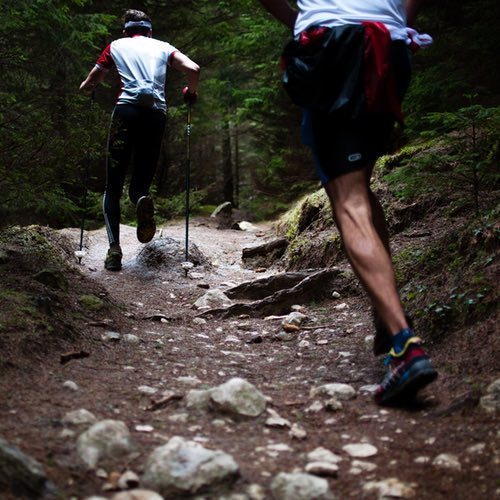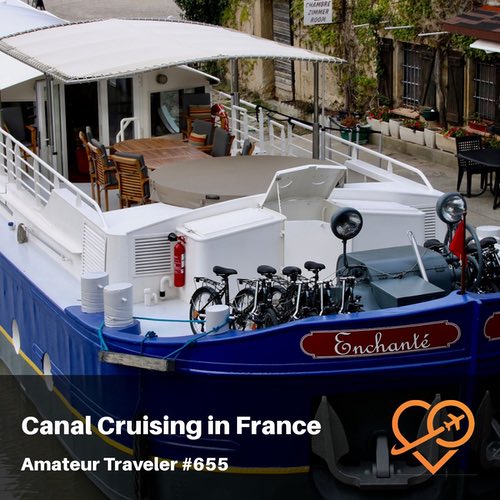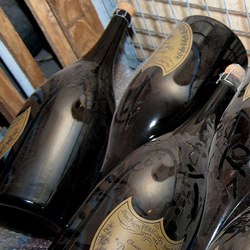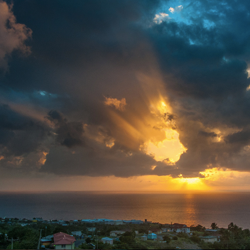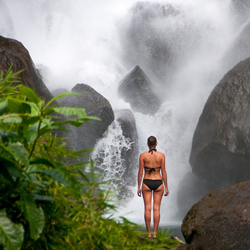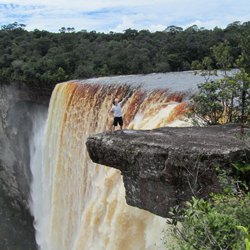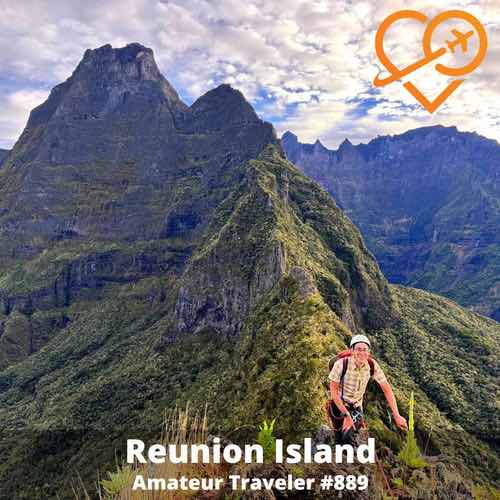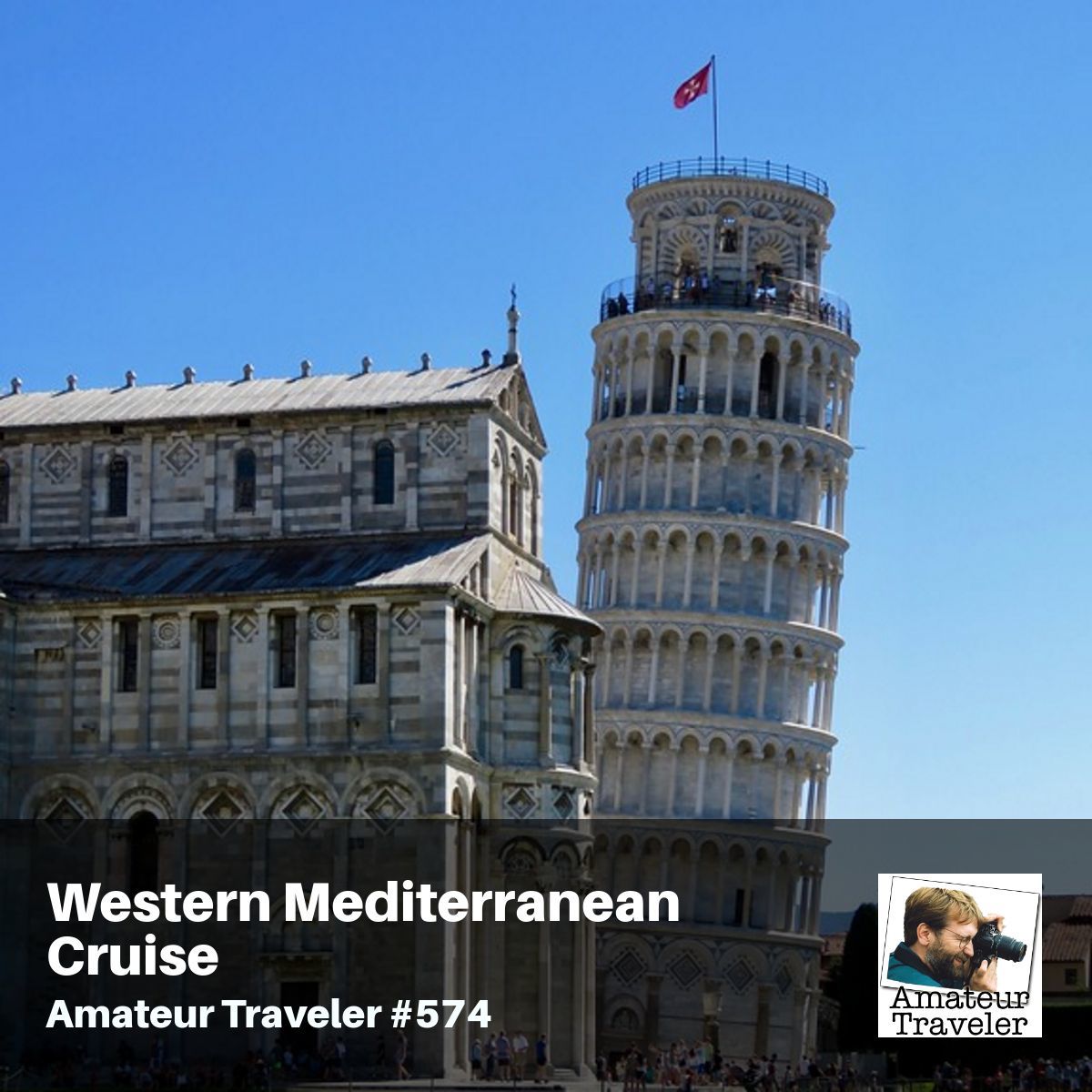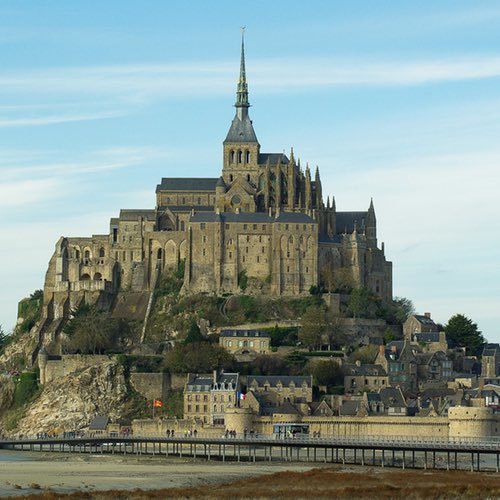Guide to France

Mont Saint-Michel
France captivates visitors with its unparalleled blend of culture, history, and natural beauty, making it one of the world’s most beloved destinations. People are drawn to France for its iconic landmarks like the Eiffel Tower and the enchanting châteaux of the Loire Valley, each telling stories of a rich and tumultuous past. The allure of France extends to its diverse landscapes, from the lavender fields of Provence to the snow-capped Alps and the sun-kissed beaches of the French Riviera.
Culinary enthusiasts revel in French cuisine, a savory testament to the country’s love affair with food, offering everything from gourmet meals in Michelin-starred restaurants to simple yet delicious fare in quaint countryside cafes.
The charm of France is also found in its art and literature, celebrated in world-famous museums and festivals that showcase the country’s pivotal role in shaping art and culture throughout history. Moreover, the French way of life, with its emphasis on leisure and savoring the moment, invites visitors to slow down and appreciate the finer things in life, making every trip to France a deeply enriching experience.
Popular Cities for Tourists in France
France is home to some of the world’s most enchanting and vibrant cities, each offering its unique blend of history, culture, and modernity. Here are some of the top cities that attract tourists from across the globe.
Paris
The capital city, often known as “The City of Light,” is famous for its art, fashion, gastronomy, and culture. Iconic landmarks like the Eiffel Tower, Notre-Dame Cathedral, and the Louvre Museum draw millions of visitors each year. The city’s charming streets, like those of Montmartre, and the romantic Seine River cruises are perennial favorites.
Lyon
Known as the gastronomic capital of France, Lyon boasts a dynamic culinary scene, with numerous bouchons (traditional Lyonnaise restaurants) and fresh food markets. The city’s historic architecture, seen in its Renaissance district, Vieux Lyon, and modern landmarks like the Confluence district, reflects its rich history and innovation.
Bordeaux
Famed for its wines, Bordeaux is a must-visit for oenophiles. The city itself offers elegant architecture, a sprawling public garden, and a vibrant cultural scene. The nearby vineyards of Saint-Émilion and Médoc invite visitors for tastings and tours.
Nice
Located on the French Riviera, Nice is beloved for its stunning beachfront, vibrant markets, and lovely Mediterranean climate. The Promenade des Anglais offers spectacular ocean views and is perfect for a leisurely stroll. Nice also serves as a great base for exploring other towns along the Riviera, such as Cannes and Monaco. The beach at Nice is small stones rather than sand, so make sure you have appropriate footwear.
Marseille
As France’s oldest city, Marseille boasts a unique maritime heritage and a dynamic cultural scene. The revitalized port area, the historic Le Panier neighborhood, and the stunning Basilique Notre-Dame de la Garde, which offers panoramic views of the city, are key highlights.
Toulouse
Known as “La Ville Rose” (The Pink City) due to the terra-cotta bricks used in much of its architecture, Toulouse is renowned for its vibrant atmosphere and youthful energy, partly due to its large student population. Key attractions include the Basilique Saint-Sernin and the Cité de l’Espace (Space City).
Lille
This northern city is known for its robust art scene and historic architecture, with the Palais des Beaux-Arts being one of France’s largest museums. Lille’s lively markets and festivals, such as the Braderie de Lille, offer a deep dive into local culture and traditions.
Strasbourg
Sitting near the border with Germany, Strasbourg is the formal seat of the European Parliament and presents a charming blend of French and German cultures. Its Gothic cathedral with its famous astronomical clock and the picturesque “La Petite France” neighborhood are highlights.
Montpellier
A dynamic city known for its medieval streets and youthful vibrancy, Montpellier is a blend of historic and modern architecture, exemplified by the Antigone district and the old town. It’s also close to the Mediterranean coast, making it popular for those seeking both culture and relaxation.
Regions in France
France offers an incredible array of outdoor landscapes that cater to all kinds of adventurers, from beach lovers to mountain hikers. Here’s a look at some of the most popular outdoor regions in France that attract nature enthusiasts and active travelers.
The French Riviera
The French Riviera, or Côte d’Azur, is synonymous with glamour and luxury, featuring a stunning coastline that stretches from Saint-Tropez to the Italian border. Renowned for its pristine beaches, upscale resorts, and vibrant nightlife, the Riviera offers ample opportunities for water sports and yachting. Towns like Nice, Cannes, and Monaco are hotspots for cultural festivals and bustling markets, attracting visitors with their unique blend of natural beauty and cosmopolitan flair.
The French Alps
The Alps are a haven for winter sports enthusiasts and a major destination for skiing, snowboarding, and mountaineering. Towns like Chamonix, Courchevel, and Méribel offer world-class ski resorts. In the summer, the region transforms into a popular spot for hiking, climbing, and paragliding, with stunning views of snowy peaks and lush valleys.
Provence
Provence is celebrated for its scenic beauty, characterized by rolling vineyards, vibrant lavender fields, and historic hilltop villages. The region offers numerous outdoor activities, including hiking in the rugged landscapes of the Luberon and exploring the extraordinary rock formations in the Calanques National Park. The area’s rich cultural heritage and tranquil countryside also make it a perfect destination for those seeking relaxation amidst nature.
The Dordogne
Known for its beautiful rivers and lush green landscapes, the Dordogne is ideal for canoeing, kayaking, and fishing. The region also boasts numerous trails for hiking and biking that pass through medieval villages, prehistoric caves, and historic castles.
The Pyrenees
Bordering Spain, this mountain range offers rugged landscapes that are less crowded than the Alps. It’s a fantastic area for hiking, with paths like the GR 10 trail spanning the entire range, and for winter sports in resorts such as Saint-Lary-Soulan and Peyragudes. The Pyrenees are also known for their natural hot springs.
Brittany
Brittany is known for its rugged coastline, ancient standing stones, and strong cultural identity that is distinctly different from the rest of France, including its own Breton language. The region is a paradise for outdoor enthusiasts with its scenic walking paths like the GR 34, also known as the Customs Path, which traces the coast offering spectacular sea views. Brittany’s rich maritime heritage is celebrated in its traditional festivals and seafood cuisine, making it a vibrant place to explore the intersection of nature and culture.
Normandy
Normandy is steeped in history from the iconic Mont Saint-Michel to the D-Day landing beaches of World War II. The region’s varied landscape includes dramatic cliffs, peaceful pastoral lands, and historic cities like Rouen with its medieval architecture. Normandy is also renowned for its culinary contributions, such as Camembert cheese and Calvados apple brandy. The area’s poignant war memorials and museums provide a deep reflection on Europe’s recent history, while its coastal beauty offers tranquil retreats.
The Loire Valley
While famous for its châteaux, the Loire Valley also offers extensive cycling routes, such as the Loire à Vélo trail. The flat terrain along the Loire River makes it perfect for leisurely bike rides, with plenty of stops at vineyards and historic sites.
Corsica
Known as the “Island of Beauty,” Corsica features a diverse landscape with mountains, forests, and picturesque beaches. The GR 20 trail, one of Europe’s most challenging hikes, attracts hikers from around the world. Additionally, its clear Mediterranean waters are ideal for diving and sailing.
Auvergne
The Auvergne region in central France is a hidden gem known for its dramatic landscapes and rich history. Dominated by the Massif Central, a vast volcanic plateau, Auvergne is a haven for nature lovers, offering a variety of outdoor activities such as hiking in the Chaîne des Puys, a chain of ancient volcanoes that are now a UNESCO World Heritage site. The region’s deep valleys, clear lakes, and lush forests provide a stunning backdrop for adventure and relaxation alike. Auvergne is also celebrated for its thermal spas, which have been popular since Roman times. In addition to its natural beauty, the region boasts charming medieval villages and towns, such as Clermont-Ferrand, where visitors can explore architectural marvels like the Gothic Notre Dame du Port Basilica. With its unique combination of natural wonders and historical richness, Auvergne offers an authentic slice of French life away from the hustle and bustle of the more tourist-heavy areas.
Alsace-Lorraine
Alsace-Lorraine, a cultural region in the northeastern corner of France, is a unique area with a distinct identity shaped by its Franco-German heritage. The region has changed hands between France and Germany several times throughout history, most notably after the Franco-Prussian War and both World Wars, which has left a marked influence on the local culture, architecture, and language.
Alsace is renowned for its picturesque villages with half-timbered houses, cobblestone streets, and vibrant flower displays, epitomized by towns like Colmar and Strasbourg, the latter being home to the European Parliament. The region is also famous for its wine route, where visitors can explore vineyards and wineries producing acclaimed white wines like Riesling and Gewürztraminer.
Lorraine, known for its rolling countryside and historic sites, boasts the beautiful city of Nancy, with its spectacular Place Stanislas, a UNESCO World Heritage site. The region is also known for the WWI battleground of Verdun and its powerful memorials and museums dedicated to peace. Lorraine is now part of the Grand Est administrative region.
Languedoc
Languedoc, a historic region in southern France, is celebrated for its diverse landscapes, from Mediterranean coastlines to vineyard-covered hills and the dramatic gorges of the hinterland. Its cultural heritage is rich, with landmarks like the Roman Pont du Gard and the medieval city of Carcassonne testifying to a turbulent past marked by Roman settlements and the Cathar Crusades. The region’s capital, Montpellier, juxtaposes historic elegance with youthful energy, largely due to its vibrant student population.
The region is also a renowned wine-producing area, offering robust local wines that have gained international recognition. Coastal towns such as Sète entice with their canals and seafood, while inland, the scenic beauty and tranquility of the Cévennes National Park beckon. Languedoc’s Canal du Midi, connecting the Mediterranean to the Atlantic, is perfect for leisurely boat or bike trips, showcasing the serene beauty and rustic charm of southern France.
The Languedoc is now part of the larger administrative region of Occitania.
Burgundy
Burgundy, a region in east-central France, is renowned for its profound influence on both French and global gastronomy, as well as its historical significance. The heartland of the region is its vineyards, which roll across the countryside from Dijon to beyond Beaune and Macon, producing some of the world’s most esteemed wines, including Pinot Noir and Chardonnay. The wine culture is deeply embedded in Burgundian life, with numerous wine festivals and tastings throughout the year. Beyond viticulture, Burgundy is the birthplace of Dijon mustard, known globally for its distinctive taste, and the region is celebrated for its rich culinary traditions with dishes like Boeuf Bourguignon and Coq au Vin.
Historically, Burgundy was a seat of immense power and wealth, which is reflected in its impressive architecture. The abbeys, such as the Abbey of Fontenay, and the magnificent Hospices de Beaune, with its iconic glazed tile roofs, provide a window into the region’s past. The capital, Dijon, once the home of the Dukes of Burgundy, boasts a well-preserved medieval center and a wealth of history and art, exemplified by the Musée des Beaux-Arts. The countryside, with its medieval villages and canals, adds to the serene and timeless atmosphere that makes Burgundy a captivating destination for those looking to enjoy the finer aspects of French culture and history.
Nouvelle-Aquitaine
Nouvelle-Aquitaine, in the southwest corner of France, is a region of incredible diversity and breadth, stretching from the Pyrenees and the Basque coastline on the Spanish border to the soft, vine-clad hills of Bordeaux. The region is a haven for surfers along the Atlantic coast, wine enthusiasts in the world-renowned vineyards of Bordeaux, and history buffs exploring prehistoric caves like Lascaux. Nouvelle-Aquitaine is also famous for its culinary specialties, such as the rich, earthy truffles of Périgord, the succulent oysters of Arcachon Bay, and the celebrated Armagnac brandy.
The region of Nouvelle-Aquitaine in France is deeply interwoven with the histories of both France and England, due in part to the Plantagenet dynasty and its famous English kings, like Henry II and his son, Richard the Lionheart. These kings ruled over a vast Angevin Empire, which included Aquitaine, and their legacy can be seen in the region’s fortresses and castles, such as the imposing Château de Chinon.
The region boasts numerous UNESCO World Heritage sites, including the Vézère Valley with its prehistoric sites and the Pilgrim’s Route to Santiago de Compostela. The city of Bordeaux, with its neoclassical architecture and the Cité du Vin, epitomizes the region’s blend of history and contemporary lifestyle. Nouvelle-Aquitaine also invites leisurely exploration of its many charming villages and towns, such as the picturesque Saint-Émilion, or the thermal baths of Dax, renowned since Roman times.
Champagne
The Champagne region of France, the birthplace of the world’s most celebrated sparkling wine, is synonymous with luxury and festivity. Nestled in the country’s northeastern part, it is the only area in the world that can produce the eponymous Champagne, a distinction protected by law and steeped in centuries of winemaking tradition. The rolling hills of the Montagne de Reims, the Côte des Blancs, and the Vallée de la Marne are lined with vineyards that grow the grape varieties Pinot Noir, Chardonnay, and Pinot Meunier, essential for creating this prestigious beverage. The region’s wineries, from illustrious labels to small family-run operations, open their cellars for tastings and tours, offering insights into the complex process of Champagne production, from the méthode champenoise to the art of blending.
Beyond the vineyards, the region’s cultural heritage shines through in cities like Reims and Epernay, which serve as the central hubs of Champagne production. Reims is home to the UNESCO-listed Notre-Dame de Reims Cathedral, the coronation site of French kings and a masterpiece of Gothic architecture. Epernay boasts the famous Avenue de Champagne, where some of the most prestigious Champagne houses are situated alongside opulent mansions. The region’s history is also marked by the scars of World War I, with memorials and museums dedicated to the memory of the conflict. The Champagne region offers a delightful blend of sensory experiences, set against a backdrop of historical depth and bucolic landscapes, making it a must-visit destination for oenophiles and history buffs alike.
Overseas Departments of France
France has several overseas departments (départements d’outre-mer, DOM), which are integral parts of the country despite being located far from the European mainland. These departments have the same political status as metropolitan departments and are represented in the French Parliament. Each of these regions offers a unique blend of French culture mixed with local traditions, creating a distinctive identity. Here’s an overview of each:
Guadeloupe
Located in the Caribbean, Guadeloupe is an archipelago consisting of beautiful tropical islands. It’s known for its lush rainforests, stunning beaches, and the active La Soufrière volcano. The islands are a hotspot for snorkeling and diving, thanks to vibrant coral reefs and rich marine life. Creole culture, with its distinctive cuisine and music, is vibrant here.
Martinique
Also in the Caribbean, Martinique boasts of mountains, beaches, and lush gardens. It is home to Mount Pelée, whose eruption in 1902 was one of the deadliest in the 20th century. The island is famous for its cultural festivals, rum distilleries, and French-Creole cuisine. The capital, Fort-de-France, features colonial architecture and lovely botanical gardens.
French Guiana
Located on the northeastern coast of South America, French Guiana is distinguished by its dense rainforests which cover much of the territory. It’s a part of the Amazonian forest, making it rich in biodiversity. The Guiana Space Centre in Kourou is a significant scientific hub. The region’s culture is a mix of French, Creole, Indigenous, and other immigrant influences.
Réunion
Situated in the Indian Ocean, east of Madagascar, Réunion is known for its volcanic, rainforested interior, coral reefs, and beaches. The island’s Piton de la Fournaise is one of the world’s most accessible active volcanoes. Réunion is culturally diverse, with communities from Europe, Africa, Asia, and beyond contributing to its melting pot of traditions.
Mayotte
Located between Madagascar and the coast of Mozambique, Mayotte is surrounded by a barrier reef, which encloses one of the largest and deepest lagoons in the world. The island is less developed compared to other French territories but offers exceptional opportunities for marine activities like diving and snorkeling. Mayotte’s population is predominantly Comorian, and the local culture reflects a blend of African, Arab, and French influences.
Cruise Travel in France
Cruise travel in France offers a unique and leisurely way to experience the country’s scenic waterways and coastal beauty. River cruises along the Seine, Rhône, and Loire Rivers allow travelers to glide past iconic landmarks such as the Eiffel Tower, the historic châteaux of the Loire Valley, and the rolling vineyards of Burgundy and Provence. These cruises often include stops in charming towns and cities, where guests can disembark to explore local markets, museums, and restaurants.
Coastal cruises along the French Riviera provide a different perspective, showcasing the glamorous ports of Nice, Cannes, and Saint-Tropez.
For a more intimate and personalized experience, barge cruises on France’s intricate canal systems offer a slower pace of travel, ideal for savoring the country’s rural beauty and culinary delights.
Road Trips in France
France is an ideal destination for a road trip, offering a diverse tapestry of routes that traverse scenic coastlines, rolling vineyards, historic landmarks, and picturesque villages. With well-maintained routes and plentiful stopovers offering delicious regional cuisine and charming accommodations, road trips in France can cater to romantic getaways, family adventures, or solitary retreats into the country’s vast and varied landscapes. While in France you will drive on the right-hand side of the road.
Languages
French is the official language spoken across the country, with regional languages like Breton and Occitan also in use.
Currency
The currency used is the Euro (EUR).
Size
France is the largest country in western Europe, roughly 1.5 times the size of Texas.
Population
France has a population of about 65 million people, ranking as the 23rd most populous country in the world and the 4th most populous country in Europe behind Russia, Germany, and the United Kingdom.
- The average life expectancy at birth for the French is 81.5 years.
Capital City
Paris is the capital city of France.
Largest City
Paris is also the largest city in France.
Major Airports for International Flights
Major international gateways include Charles de Gaulle and Orly in Paris, Nice Côte d’Azur in the south, and Lyon-Saint Exupéry.
Getting Around France
France offers an extensive and efficient network of transportation options that cater to all types of travelers, making it easy to explore both urban and rural areas. Here’s how you can navigate the country:
Trains: France’s national railway company, SNCF, operates one of the most impressive train networks in the world. The high-speed train service, the TGV (Train à Grande Vitesse), connects major cities like Paris, Lyon, Marseille, and Bordeaux in just a few hours. Regional trains (TER) offer frequent services for shorter distances and access to smaller towns. For scenic routes, consider specialty trains like the Mont Blanc Express.
Domestic Flights: For those looking to save time, domestic flights can be an efficient way to travel between major cities. Airports in cities like Paris, Lyon, Nice, and Toulouse offer frequent flights that cover vast distances quickly. However, for the environmentally conscious, trains are often recommended over flights due to their lower carbon footprint.
Car Rentals: Renting a car provides flexibility to explore France at your own pace, particularly in rural areas where public transport may be less frequent. France has a well-maintained network of motorways (autoroutes), which are mostly toll roads. Remember that driving is on the right-hand side, and an international driver’s permit is recommended for non-EU license holders.
Buses and Coaches: Long-distance buses, such as those operated by BlaBlaBus and FlixBus, offer an economical alternative to trains and planes, connecting major cities and towns across France. Local buses provide essential services in and around smaller towns and rural areas.
Cycling: France is incredibly bike-friendly, with numerous marked cycling routes like the Loire à Vélo. Many cities offer bike-sharing schemes, such as Vélib’ in Paris, making it easy and enjoyable to explore urban areas on two wheels.
Metro and Trams: In major cities like Paris, Lyon, and Marseille, the metro is a fast way to navigate the urban environment. Tram systems in cities such as Bordeaux, Strasbourg, and Nantes also provide reliable and scenic city travel options.
Boats: In coastal areas and along major rivers, boat services are a scenic way to travel. The Seine river cruises in Paris are popular among tourists, as are the ferries connecting Marseille to Corsica and other Mediterranean destinations.
Walking: Many of France’s city centers are well-suited to walking. Places like the historic core of Paris, the medieval streets of Lyon, or the castle town of Carcassonne are best explored on foot to appreciate their beauty and charm fully.
Being an Expat in France
If you can arrange the appropriate visa, France can be an attractive place to live. France doesn’t currently offer a digital nomad visa. However, there are several long-stay visas for self-employed professionals. You may qualify for them if you don’t work or freelance for foreign companies.
Visa Requirements for Travelers
France is part of the Schengen Area, allowing passport-free travel between 26 European countries. Here’s a detailed breakdown of visa requirements for various travelers:
- U.S. Travelers: U.S. citizens can enter France and stay for up to 90 days for tourist or business purposes without a visa.
- EU Citizens: Citizens from EU member states do not require a visa to enter France and can live and work there without any restrictions.
- UK Citizens: Post-Brexit, UK citizens are treated as third-country nationals. They can stay visa-free in the Schengen area, including France, for up to 90 days in any 180-day period for tourism, business trips, or family visits.
- Canada, Australia, and New Zealand Citizens: Similar to U.S. travelers, citizens from these countries can stay in France for up to 90 days without a visa for tourism or business purposes.
- Other Countries: Travelers from countries such as Russia, India, and China, among others, need to apply for a Schengen visa to enter France. This visa allows the holder to travel throughout the Schengen Area for up to 90 days within a 180-day period.
- Long Stay Visas: For stays longer than 90 days, regardless of nationality, a long-stay visa is required. This applies to those who wish to work, study, or live in France.
When traveling to France, all travelers need to have a passport that is valid for at least three months beyond the period of their intended stay. Additionally, it’s wise to check the latest entry requirements before travel, as policies can change due to circumstances like public health concerns.
Most Well-Known Local Cuisine
Famous for its culinary traditions, key dishes to try include baguettes, croissants, escargot, coq au vin, and ratatouille. Don’t miss out on French wines and cheeses!
Best Time to Go
The best time to visit is spring (April to June) or fall (September to November) when the weather is pleasant, and the tourist crowds are smaller. August is the worst time to go when the people of much of Europe are on vacation and when the weather is hot and sticky in much of the country.
Etiquette Tips
Greet with a light handshake or kisses on both cheeks. Saying “Bonjour” when entering a shop is customary, and formal titles are appreciated.
Safety and Security Tips for Travelers
France is generally safe, though pickpocketing in tourist areas and public transport is common. Stay alert and secure your belongings.
Emergency Contacts and Resources for Travelers
- For life or death emergencies, dial 112 or 15 for immediate assistance.
- Victims of crimes: 17
- Fire: 18
Contacting the U.S. Embassy
When calling from France, dial 01.43.12.22.22
When calling from the U.S. (landline), dial 011.33.1.43.12.22.22
When calling from the U.S. (cell phone), dial +11.33.1.43.12.22.22
Fun Facts
- The French Army was the first to use camouflage in 1915.
- The Louvre is the world’s most visited art museum.
- France was the first country to make it illegal to throw away or burn food that is still edible.
- The Eiffel Tower was supposed to be temporary and was initially unpopular.
- France produces almost 360 different types of cheese.
- Denim comes from the French city of Nimes and literally means “from Nimes”








